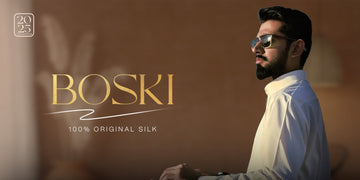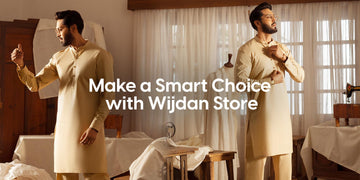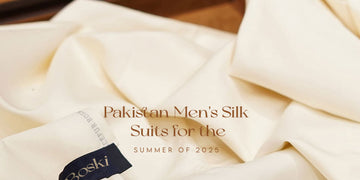The art of applying design, aesthetics, clothing construction, and elements of natural beauty to clothing and its accessories is known as fashion designing. Culture and other trends have an effect on it, and it has altered over time and space. "A fashion designer creates clothing for clients, including purses, shoes, and accessories as well as dresses, suits, pants, and skirts. He or she can decide to specialize in creating clothing, accessories, or jewelry, or they can choose to work in more than one of these areas.
Today's fashion industry is global, and it exists in the majority of the world's main nations. France, Italy, the United Kingdom, the United States, Japan, Germany, and Belgium are the seven nations that have developed an international reputation in the fashion industry. Paris, Milan, New York City, and London are the "big four" fashion capitals of the world, with Paris frequently being referred to as the fashion capital of the entire planet. here our exchange policy.
There are 5,000 kinds of men's clothing available in the market right now. This is a huge amount considering that there are only 4,000 brands of clothes for men to choose from. The majority of these are designed with fashion in mind and many people tend to choose these ones over others due to their more affordable price points.
It can either be considered as good or bad depending on the situation, if it is too expensive or not enough, even if you think it may be a little bit too tight. But some people will argue that a few of these should just have been made specially for men rather than for women, as they seem to have more advantages when it comes to having the latest design or something like that. I do understand that people will say this and some would disagree but at the end of the day, these types of clothing are more comfortable in certain ways, with one being able to take off his pants and then he will be in a better position for those around him when wearing.
Some may think that these kinds of clothing are quite uncomfortable, but to me personally, it doesn't bother me much, as long as it does what it’s supposed to. Yes, if there's no comfort to wear for comfort, there's nothing wrong with that. Also, it doesn't matter who decides to wear them. If someone wants to just have the most basic type of clothes, then that is fine for them as long as they're comfortable enough to wear. So yes, it definitely isn't as uncomfortable as other people tend to think. In terms of comfort, it doesn't really matter and so why should we judge? Isn't it up to each individual to decide whether or not they want such things (or not to wear such things), as long as they're safe enough.
One thing I wish to point out is that just like with most things, there's always going to be negative factors which influence people' preferences especially when it comes to choosing clothes. With this particular kind of clothing, it's not going to come as anything negative. Of course, there are various reasons why people wouldn’t want that clothing, but that's just another problem when trying to make a decision in purchasing a specific product (that's why they look for feedback).
These kinds of clothes are made specifically for men and there are several features that help men decide which clothes they need and what kind of style they prefer. So let's start by talking about the different types and what makes them unique. Then on to the different colors and designs which will give men a sense of belonging. Finally, of course you will also find products that can be worn during the actual work or at home which means that this kind of clothing is very versatile.
The term "Pakistani clothes'' refers to the ethnic attire that is most frequently worn by residents of Pakistan and by those who are descended from Pakistanis. Pakistani attire reflects the nation's culture, demography, and the regional cultures of the Punjab, Sindh, Balochistan, Khyber Pakhtunkhwa (Pashtun), Gilgit-Baltistan, and Kashmir. Each regional culture's clothing reflects the local climate, way of life, and specific fashion, giving it a distinct identity from other civilisation’s.
In all five of Pakistan's provinces—Punjab, Sindh, Balochistan, Khyber Pakhtunkhwa, and Gilgit-Baltistan—men and women wear the shalwar kameez, Achkan/Sherwani, Kurta, or Kurta Pajama. It is also the national clothing of Azad Kashmir. Shirts are referred to as kameez and baggy pants are referred to as shalwar. All secretariat employees have been required to wear the national dress since 1982.
Each province has a distinctive way of wearing the shalwar kameez, including the Sindhi, Punjabi, Pashtun, and Balochi styles. Pakistanis dress in a wide variety of fabrics, including silk, chiffon, cotton, and other luxurious materials, with stunning colors and designs.
Men dress in shalwar kameez men's, mens kurta, achkan, sherwani, churidar, or pajamas. The jama and the angarkha are other articles of apparel. Turbans, the Jinnah Cap, also known as the Karakul, Fez, also known as the Rumi Topi, and Taqiyah are examples of headgear (cap). Popular footwear includes the Khussa and Peshawari chappal. Traditional shawls made of Pashmina or other warm textiles are also available, particularly in the country's northern parts, where Khyber Pakhtunkhwan typically don the Pakol hat.
When designing their garments and accessories, such as rings, bracelets, necklaces, and earrings, fashion designers employ a range of diverse techniques. Designers must anticipate changes in consumer preferences because it takes time to get a garment on the market. Fashion designers develop unique clothing appearances by taking into account shape, color, fabric, detailing, and other elements.
Fashion trend research is done by designers, who then translate it for their audience. Manufacturers employ the specific designs that they use. The role of a designer is essentially this, however there are variations within it that are based on the buying and merchandising strategy. Budget shops use cheap textiles to have a quick turnaround on manufacturing when considering product quality control, but high-end retailers make sure that the best fabrics are used and a lot of effort is spent.
Fashion designers work hard to provide clothing that is both aesthetically pleasing and functional. The wearer and the environment in which the garment will be worn are taken into consideration as they work with a variety of fabrics, hues, patterns, and designs. Although the majority of clothes used for daily wear falls into a small spectrum of traditional styles, distinctive attire is typically desired for special events like evening wear or party dresses.
Some clothing items, such as haute couture or bespoke tailoring, are manufactured especially for a specific person. Today, the majority of clothing—especially casual and daily wear—is made for the mass market and is referred to as fast fashion.
There are courses you may take and credentials you can get to advance in the field of fashion design. However, you don't need a college degree to work in this profession; experience and a passion for fashion are preferred. This achievement would be aided by having an associate's or bachelor's degree in fashion design. You will study color, textiles, sewing and tailoring, pattern making, fashion history, and computer-aided design (CAD) as a fashion design major, as well as several apparel categories like menswear and footwear. Learning about every significant aspect of fashion and creating clothing and footwear will aid aspiring fashion designers.
Fashion designers can work full-time as "in-house designers" for one fashion business, which owns the designs, or they can work independently or in groups. Independent designers work for themselves and market their creations to clothes manufacturers, fashion companies, or retail establishments. The majority of fashion designers create their own labels to advertise their creations. While some work for themselves and design for specific clients. Other upscale clothing creators target niche shops or upscale department stores. These designers produce both unique outfits and those that adhere to accepted fashion trends. However, the majority of fashion designers work for clothing companies, designing clothes for men, women, and children that are intended for the general market.
Different techniques are used by fashion designers. Others drape cloth over a dress form, which is another word for a mannequin, to sketch their ideas on paper. Some designers collaborate with specific apps that may integrate all of their ideas and help them think more broadly about a design.
A professional pattern maker will be consulted after a designer is entirely pleased with the fit of the toile (or muslin), and they will then create the finished, functional version of the pattern using a card or a computer software. To ensure it is a functional outfit, a sample garment is constructed and tested on a model. Fashion design is expressive; the designers produce works of art that may or may not have practical uses.
Charles Frederick Worth, the first designer to have his label stitched into the garments he made, is generally credited with establishing fashion design in the 19th century. Prior to the former draper opening his maison couture (fashion house) in Paris, high fashion was derived from the attire used at royal courts.
Clothing design and creation were handled by entirely unknown seamstresses. Because of his popularity, Worth was able to tell his clients what to wear rather than following their lead like earlier dressmakers had done. In fact, it was to characterize him that the name "couturier" was first used. Academics study every piece of clothing from any era as costume design, but only clothes made after 1858 are regarded as fashion design.
Many design businesses started hiring artists to draw or paint clothing concepts at this time. Clients were given the photographs, which was significantly less expensive than making a sample garment in the workroom. If the customer loved the design, they would order it, and the resulting clothing would bring in revenue for the business. As a result, the custom of designers sketching up clothing concepts rather than showing finished products on models to consumers had its start as a matter of economics.



